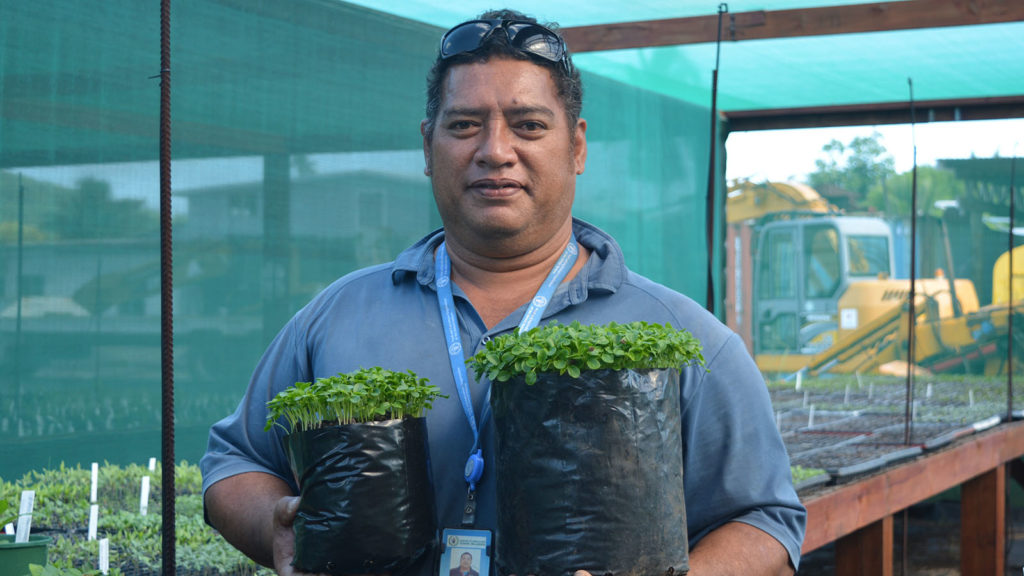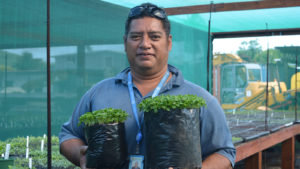Local pawpaw growers are planning to supply New Zealand market with their produce in less than 12 months and it’s just the beginning, says one of the export organisers.
A meeting was held on Monday morning at the Ministry of Agriculture for new co-operative, Kia Orana Kai Natura Taokotai. The organisation plans to export produce to Aotearoa New Zealand starting with pawpaw.
One of the group organisers, John Tierney after the meeting said thing were “firing along”.
About 10,000 pawpaw trees were put in the ground in the last couple of months and land was being prepared to put in another 5000, Tierney said.
He said a new heat treatment plant was planned to be established by the Rarotonga International Airport in the next six to nine months. In around 12 months’ the plan was to have pawpaw sent to New Zealand, he added.
Tierney said the co-op would start exporting on one flight a week – likely Saturday – which would equate to around 10 tonnes of pawpaw.
“If you’re looking at the whole cycle, (pawpaw) coming off the trees Thursday and Friday, in the supermarkets Monday morning in New Zealand.
“It’s by no means the end, it’s the beginning with one flight a week. That is the beginning of an expanding primary industry that we are nursing and coercing and putting together.”
Tierney said the plan was to diversify once the pawpaw export was established.
Airfreight measure cargo based on weight and volume, Tierney said weight often maxed out before volume. He said the co-op wanted to export a combination of products to make the most of the freight space.
Pawpaws are a relatively heavy fruit normally weighing between 600 to 900 grams each.
“We’re really keen to do that consolidation so we can make advances on the capacity rather than the weight.”
Tierney said exporting pawpaw fresh was a good way for growers to get quick cash flow but said there was added value in processing the fruit into juices, oils and pharmaceutical products.
“We would rather process and get the higher value from multiple products, but you get the cash flow from being able to put them in the supermarket shelf straight away on Monday morning.”
Kia Orana Kai Natura Taokotai is in an arrangement with New Zealand co-operative, Market Gardeners that have been in operation for close to 100 years.
Tierney said: “They don’t produce pawpaw but they import it so they are the biggest single importer of pawpaw into New Zealand, that’s coming from the Philippines, from Thailand, from Vietnam by sea.”
“That takes three weeks to get to the market and our product is far sweeter and juicer and taster and looks better. Everybody wants it rather than the Asian product.
“There is a strong demand for the fruit in New Zealand.”
Tierney said the marketing and branding was currently being worked out.
Ministry of Agriculture biosecurity division director, Ngatoko Ngatoko said any fruits that were a host to the fruit fly like pawpaw needed to be heat treated.
“Anything that goes to New Zealand fresh especially with fruit, you need to treat in the heat treatment.”
Ngatoko said the current export market with the taro had less biosecurity requirements.
“But any fruits like pawpaw or mango, it needs to go through the system.”
He said a heat treatment plant would mean other fresh produce could also be exported.
Rarotonga used to have a heat treatment plant stationed at the airport which ran from mid-1996 to early-2000 but it was ripped out to make room for Air New Zealand’s baggage storage.
The old treatment plant is now unusable.






